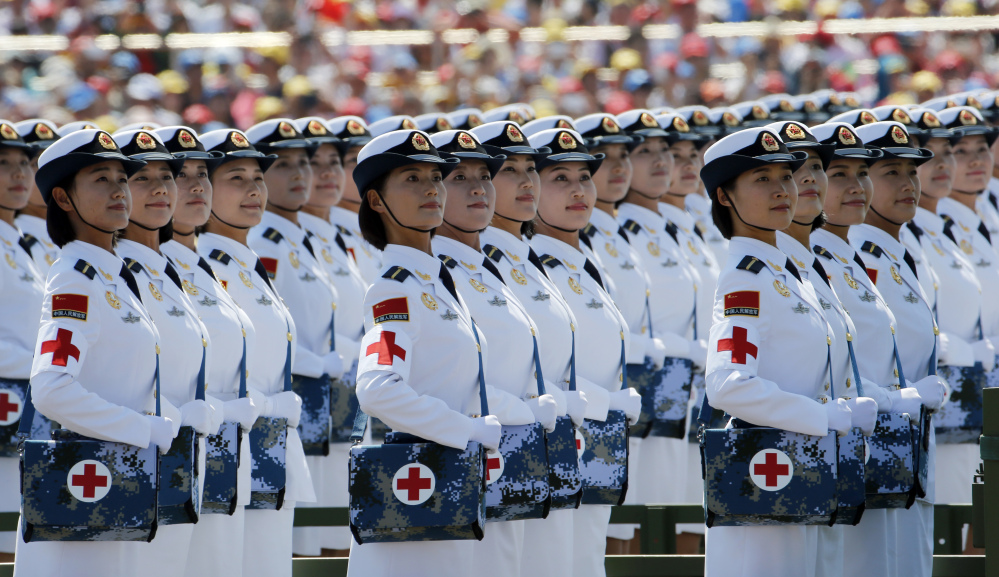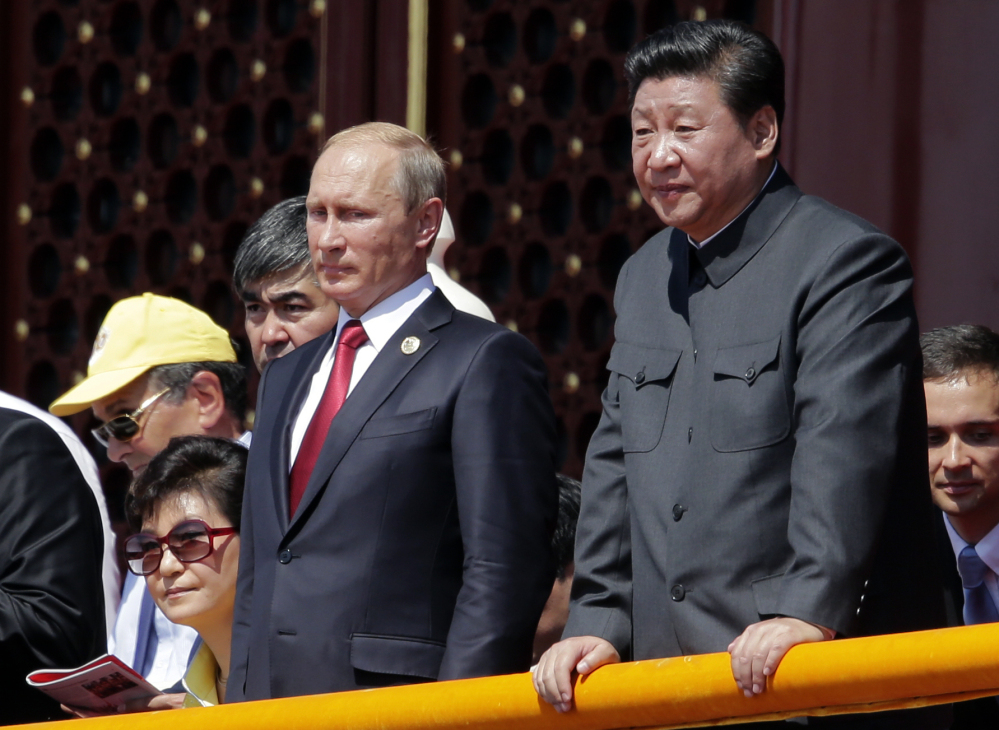BEIJING — The Chinese Communist Party pulled off its biggest World War II military parade ever on Thursday, shutting down central Beijing for a spectacle of marching soldiers, rumbling tanks, patriotic music and never before seen missiles and other military equipment.
Russian President Vladimir Putin and some 29 lesser-known world leaders joined Chinese President Xi Jinping in watching the procession, held to mark the 70th anniversary of the end of World War II. Aircraft with colored contrails soared over Tiananmen Square on a nearly perfect blue-sky day, which the Communist Party helped manufacture by shutting down hundreds of polluting industries in and around Beijing.
WEAPONRY STIRS WARINESS
With so much weaponry on display, some of China’s neighbors were wary of the parade. Japan was one of those, seeing it as another chapter in Beijing’s efforts to whip up anti-Japanese sentiment.
But China’s President Xi didn’t seem to care about the international optics. Experts say he seemed to be aiming his message largely at the Chinese people, whose trust in the Communist Party’s governance has been shaken recently by China’s economic downturn and the Tianjin industrial disasters.
“From a soft power perspective it (the parade) is a loser, especially in the United States,” said Sam Crane, a China scholar who teaches at Williams College in Massachusetts. “But the key audience for this is less the world and more the domestic population. It is Xi saying to the Chinese: I have helped to make us strong again and I am willing to show the world that we are strong, even if the world is uncomfortable with us being strong.”
The U.S. Navy is likely to be uncomfortable with at least one military item that was unveiled Thursday – China’s DF-21D “carrier killer” missile. Also known as the Dongfeng (“East Wind”), this missile has a reported range of 960 miles and can travel at 10 times the speed of sound.
Some analysts think it could make aircraft carriers obsolete, although the real range and accuracy of the Dongfeng is impossible to verify.
The DF-26 intermediate-range missile is another Chinese weapon that made an appearance at the parade. It is known as “the Guam killer,” because it has a range that could take out the U.S. Navy base in Guam.
Since becoming president, Xi has sought to beef up China’s navy and high-tech defense capabilities by redirecting funds from the army. On Thursday he took a big step in that direction. At the ceremony, he announced he would cut 300,000 troops from China’s army of 2.3 million. China’s Defense Ministry says the cuts will be completed by the end of 2017.
Xi also surprised some observers by standing before the procession with former President Jiang Zemin. For months, China watchers have posited that there may be mounting tension between Xi and the former president, partly because Xi has targeted some of Jiang’s allies in his anti-corruption campaign.
Before the troops, tanks and missiles started rolling down Chang’an Avenue, past the Forbidden City and Tiananmen Square, Xi delivered a speech. Instead of his normal dark business suit, he was dressed in what the state-run Xinhua news service called “a sharply cut, high-collared Mao suit.”
A DIG AT JAPAN
Some had thought Xi might use the occasion to offer some words of rapprochement toward Japan, but that was not to be. If anything, the Chinese president took a dig at Japan, which historians say caused the deaths of roughly 12 million Chinese during the Sino-Japanese war.
Copy the Story LinkSend questions/comments to the editors.




Success. Please wait for the page to reload. If the page does not reload within 5 seconds, please refresh the page.
Enter your email and password to access comments.
Hi, to comment on stories you must . This profile is in addition to your subscription and website login.
Already have a commenting profile? .
Invalid username/password.
Please check your email to confirm and complete your registration.
Only subscribers are eligible to post comments. Please subscribe or login first for digital access. Here’s why.
Use the form below to reset your password. When you've submitted your account email, we will send an email with a reset code.